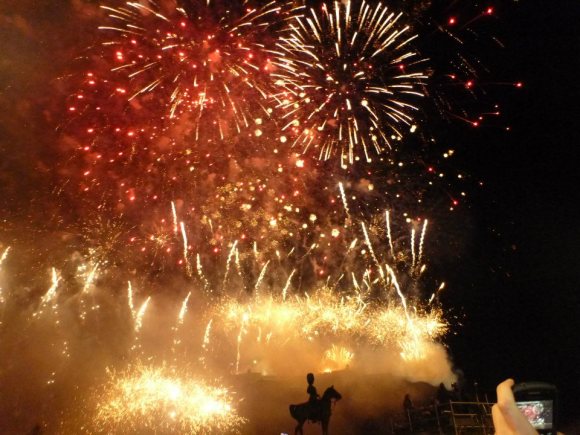I don’t know if it was the accent, bag pipes playing in the street or the whisky (not whiskey) shops on every corner – but Scotland is just different from England. Proud of their heritage and fiercely independent minded, the Scots of Edinburgh surely have a rich heritage to be proud of.
‘Hogmanay’ is Scottish for the last day of the year. Historically believed to have coincided with the Winter Solstice, it has grown to one of the largest New Years celebrations in the world.
Kicking off this three day event, is the torchlight procession (on Dec 29th). Largely done in part for charity, each member lights each others candle until the crowd of 20,000 people can proceed down Chambers street fully lite. The sight of walking fire culminates at Edinburgh castle where viking processions set afire wooden structures in the streets.
New Years Eve is an entirely separate event. With a concert in the gardens, the Keilidh (traditional Scottish music) and the infamous street party, there is plenty to entertain. The street party is the most popular; the city shuts down the main thoroughfare of Princes St to allow the nearly 400,000 visitors fill its streets. With 5 live bands, screens and a 2 minute long firework finale – it is easy to see how this event is one of the worlds most popular.
Probably the best part of the night is the singing of “Auld Lang Syne” – that song we all sing during New Years, written and popularized by the famous Scottish poet, Robert “Rabbie” Burns. Does the below sound familiar?
Should auld acquaintance be forgot and never brought to mind?
Should auld acquaintance be forgot and auld lang syne
For auld lang syne, my dear, for auld lang syne,
We’ll take a cup o kindness yet, for auld lang syne.”
As a local told me– the air of Edinburgh gets into your blood. It fills your spirit with the celebration of New Years and, incredibly, cures your hangover the following day.


